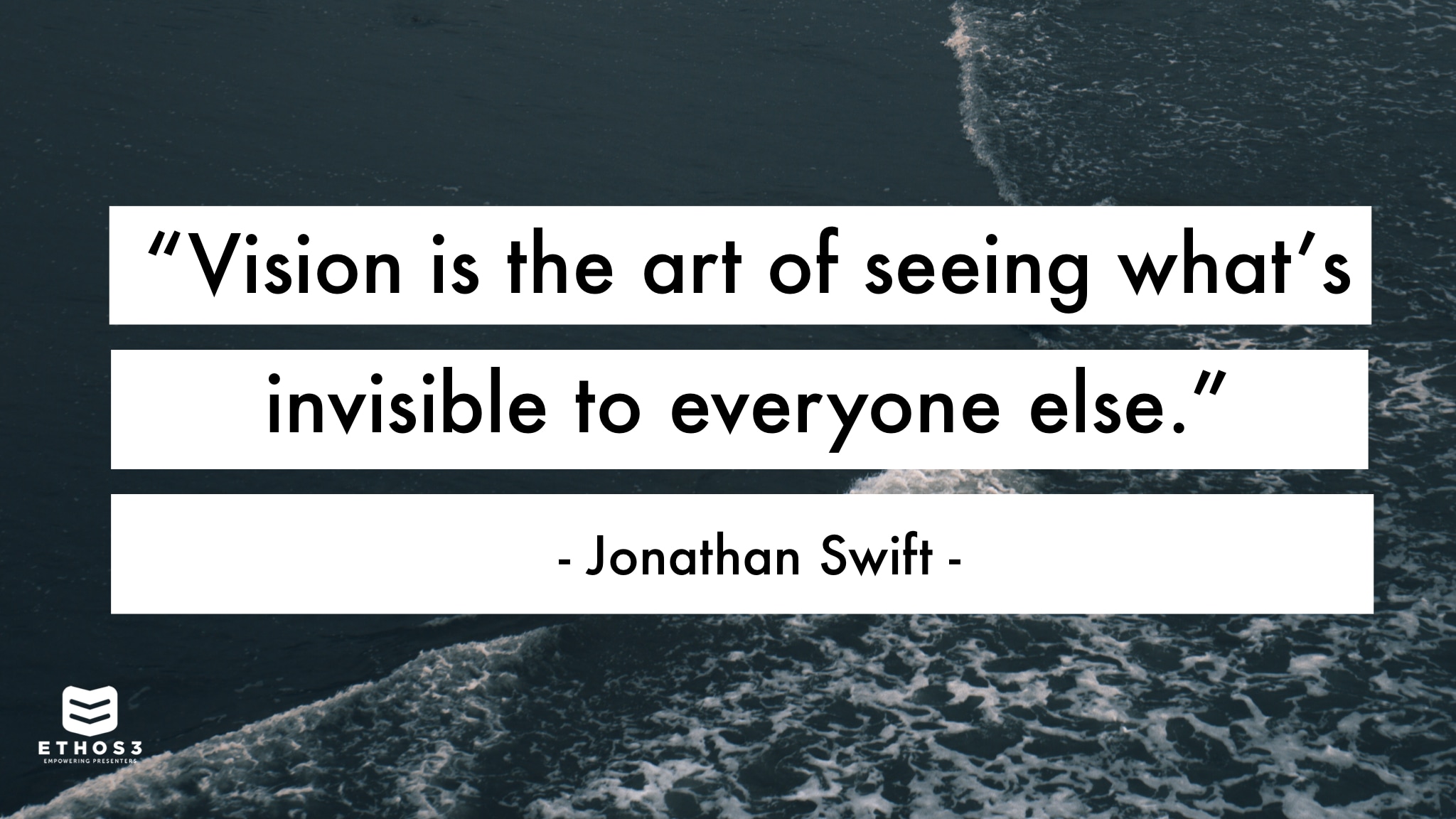Vision is a vital part of every presentation. When it comes to presentations specifically vision is defined as the key message you are looking to portray. It is the heart behind any great presentation, and it should be the driving factor for everything the presenter is going to share. However, often times presenters don’t have a clear vision, so they instead rely on their facts and figures to inspire the audience. The reality is that no matter how hard we try, leading with facts and figures will never be as powerful as leading with vision.
You may be saying to yourself, “That’s great, but I’m not the visionary.” Here’s the truth: We are all visionaries. If you have an idea to share or a product to sell, you have a vision. The key as a presenter is ensuring you have developed your vision and communicate it well.
So when it comes time for your next presentation, here are 4 questions to ask yourself as you develop your ideas:
Question 1: What about this presentation am I most passionate about?
Asking this question will help you understand what to focus on as you are crafting and delivering your presentation. What about your presentation keeps you up at night or drives you to discover more? If you are not passionate, it will be immediately apparent to your audience, so start with your passion area and frame out your presentation from there.
Question 2: What is my audience passionate about?
It does not matter how passionate you are about a subject if your audience isn’t passionate about the same thing; chances are your presentation will fall flat if they’re struggling to stay onboard with the topic. By seeking to understand their passion area, you can then marry what you are passionate about with what they are passionate about to create a clear and inspiring presentation.

Question 3: What is the goal of my presentation?
If your goal is to inspire your audience, the vision is going to look differently than if your goal is to get them to invest or buy your product. That is why it is important to understand from the beginning what your goal is. Each segment of your presentation should be supporting your goal and adding value to the overall message. By going in with a clear understanding, you will ensure you are accomplishing your end goal.
Question 4: How do my facts and figures support or hinder my vision?
This stage is when you should bring in all of the facts and figures you plan to share and compare them against your answers to the above three questions. Then select the facts and figures that support your vision, and leave out the ones that are either not necessary or hinder your vision overall. Facts and figures are important, because they support your vision, but they should only be used as a complement to your vision.
Jonathan Swift says, “Vision is the art of seeing what’s invisible to everyone else.” As a presenter, your job is to take what others can’t see and bring it to life. Facts and figures are important, but it is the vision that will leave your audience wanting more. So start by defining and supporting your vision, and watch as the invisible becomes reality.
The team at Ethos3 would love to help you craft a powerful vision. Contact us today for more info about how we can help you with your next project.